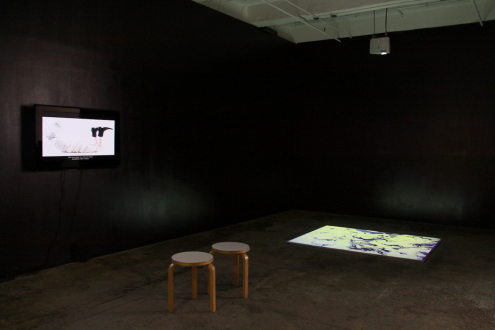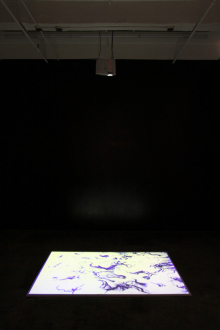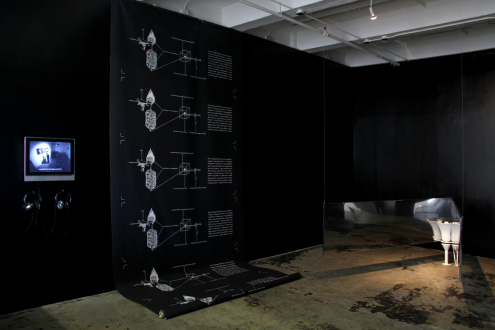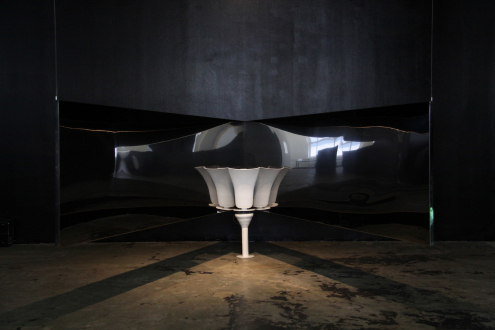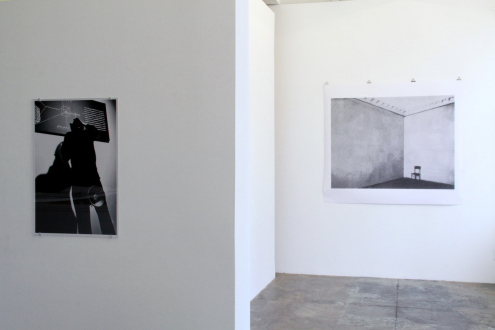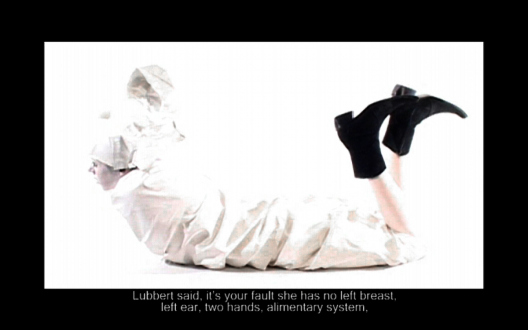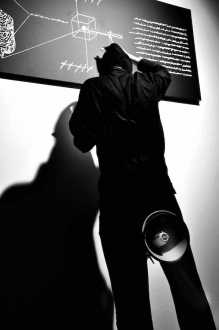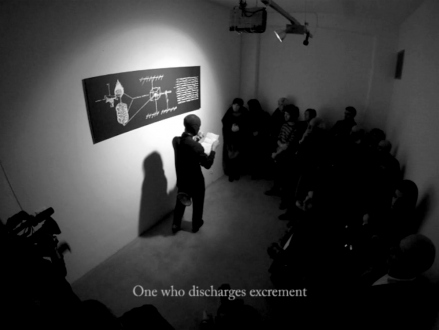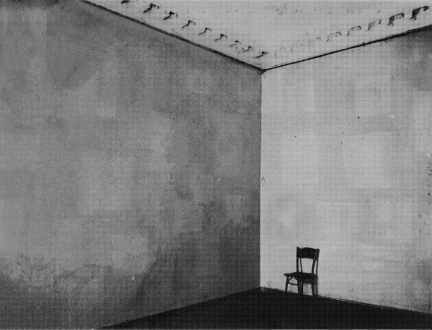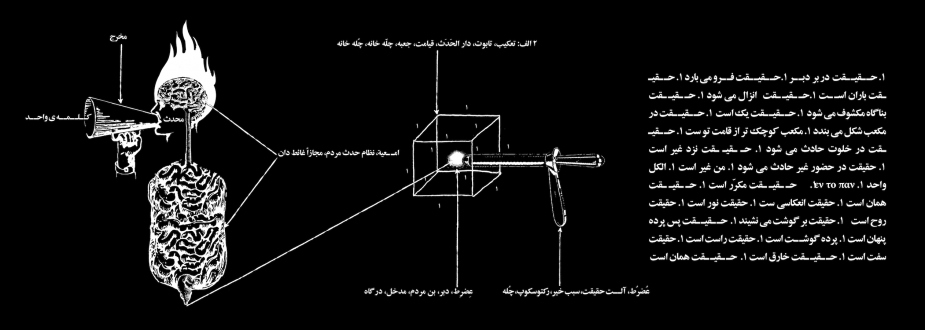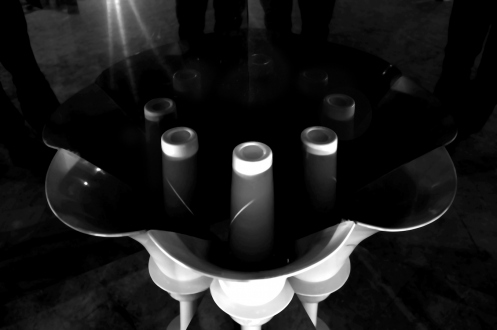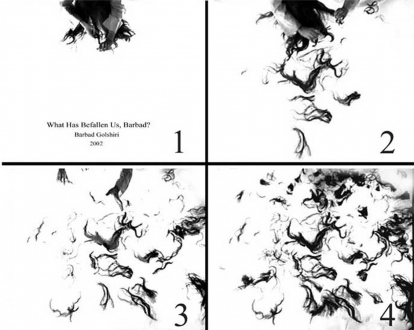Nothing Is Left to Tell (Works)
Selected Works
Barbad Golshiri
Nothing Is Left to Tell Press Release
Thomas Erben Gallery is proud to present the first US solo exhibition of Tehran based conceptual artist Barbad Golshiri (b. 1982). The five pieces in Nothing Is Left to Tell are exemplary of the artist’s prolific practice that includes media arts, theater, “Aktion” and critical writing.
Central to his work is the examination of media and their potential to manipulate as well as the arts’ plane of the feasible; the impossibility of quitting the possible field of what Golshiri calls “exhibiting”. A recurring theme is loop and répétition: “One acts in loop,” he remarks, “when one is trapped and the belief in any transcendence and escape is far from hand, that is when one is obliged to do the same thing.”
In the video What Has Befallen Us, Barbad? (2002, 26 min.), the artist’s long hair is falling unto a lit surface as it’s getting cut, the condition set by the newspaper he worked for as an art critic at the time. In what he calls “a Faustian experience; selling not just my soul, but also my body,” he is “exhausting [himself] with art.” Referencing an earlier short story by his father Houshang Golshiri (a famed Iranian writer), instead of speaking up, he lets the poetic imagery protest silently.
Extending from Jxalq [(dʒχælgh) v.t. & i., act of creating a masturpiece] (2006), which was included in Looped and Layered at this gallery last spring, Masturpiece (2006, 12 min.) presents to us a woman, bundled in white and lying on her stomach slowly undulating back and forth. Via voice over and subtitles, a treatise meanders like a dream sequence, conflating the video image with thoughts around Descartes’ Meditations and the painting The Stone Operation (1475-1480) by Hieronymus Bosch, depicting the removal of the stone of folly.
A megaphone built into the short end of a protruding v-shaped mirror appears as a multi-pedaled flower in Narcissus Echoes (2009-10), see image above. When drawing close, one witnesses a remorseful confessor – the artist – who has gone through numerous répétitions only to become another descendent, a new echolalic agent of the ideology of the “Sacred System”. He speaks within a cluster of “truths”, revealed to him under mental and physical abuse in prison. In solitude – where no “alien” thoughts could penetrate – the artist confesses his socio-political, sexual and cultural sins. An ambivalent symbol of authority and spectacular atonement in Narcissus Echoes, the megaphone is liberated in the documented “Aktion” Distribution of the Sacred System (2010) and becomes the mouthpiece of dissent.
Displayed in the project room is Golshiri’s First Aplasticist Exhibition (2009) in which he has removed all paintings and papers from Malevich’s Last Futurist Exhibition (Petrograd, 1915).
With intellectual confidence, Golshiri embeds a wealth of references – literary, bodily, philosophical, autobiographical, historical, political – into his works entrusting the audience to decipher not only what can be seen in the artist’s pieces, but also what has been injected between the proverbial lines. In his home country, Golshiri has acquired a reputation, constantly walking a very fine line between the expectations of an audience for critical commentary and the need to maintain an art practice and livelihood granted by the authorities. He adapts this condition proactively and turns it into a conceptual approach that seems free of fear – even playful – and saturated with a deep sense of political urgency as well as humor.
